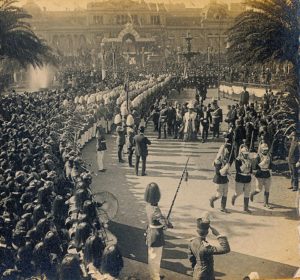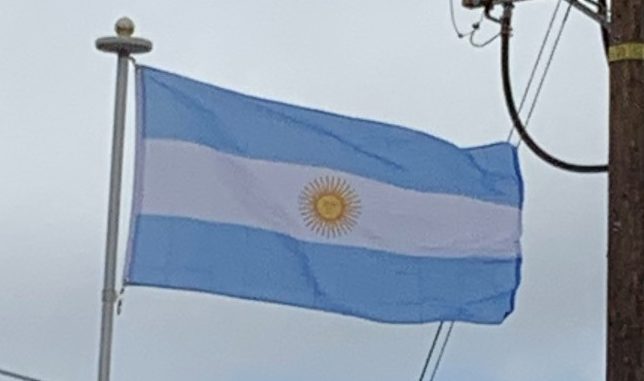Starting with Julio Argentino Roca in 1880, ten consecutive federal governments emphasized liberal economic policies. The massive wave of European immigration they promoted—second only to the United States’—led to a near-reinvention of Argentine society and economy that by 1908 had placed the country as the seventh wealthiest developed nation in the world. Driven by this immigration wave and decreasing mortality, the Argentine population grew fivefold and the economy 15-fold: from 1870 to 1910 Argentina’s wheat exports went from 100,000 to 2,500,000 tons per year, while frozen beef exports increased from 25,000 to 365,000 tons per year, placing Argentina as one of the world’s top five exporters. Its railway mileage rose from 313 to 19,327 miles. Fostered by a new public, compulsory, free and secular education system, literacy skyrocketed from 22% to 65%, a level higher than most Latin American nations would reach even fifty years later. Furthermore, real GDP grew so fast that despite the huge immigration influx, per capita income between 1862 and 1920 went from 67% of developed country levels to 100%: In 1865, Argentina was already one of the top 25 nations by per capita income. By 1908, it had surpassed Denmark, Canada and The Netherlands to reach 7th place—behind Switzerland, New Zealand, Australia, the United States, the United Kingdom and Belgium. Argentina’s per capita income was 70% higher than Italy’s, 90% higher than Spain’s, 180% higher than Japan’s and 400% higher than Brazil’s. Despite these unique achievements, the country was slow to meet its original goals of industrialization: after steep development of capital-intensive local industries in the 1920s, a significant part of the manufacture sector remained labor-intensive in the 1930s.
Between 1878 and 1884 the so-called Conquest of the Desert and Chaco occurred, with the purpose of giving by means of the constant confrontations between natives and Criollos in the border, and the appropriation of the indigenous territories, tripling the Argentine territory. The first conquest, consisted of a series of military incursions into the Pampa and Patagonian territories dominated by the indigenous peoples, distributing them among the members of the Rural Society, financiers of the expeditions. The conquest of Chaco lasted up to fines of the century, since its full ownership of the national economic system only took place when the mere extraction of wood and tannin was replaced by the production of cotton. The Argentine government considered indigenous people as inferior beings, without the same rights as Criollos and Europeans.

In 1912, President Roque Sáenz Peña enacted universal and secret male suffrage, which allowed Hipólito Yrigoyen, leader of the Radical Civic Union (or UCR), to win the 1916 election. He enacted social and economic reforms and extended assistance to small farms and businesses. Argentina stayed neutral during World War I. The second administration of Yrigoyen faced an economic crisis, precipitated by the Great Depression.
Infamous Decade:
In 1930, Yrigoyen was ousted from power by the military led by José Félix Uriburu. Although Argentina remained among the fifteen richest countries until mid-century, this coup d’état marks the start of the steady economic and social decline that pushed the country back into underdevelopment.
